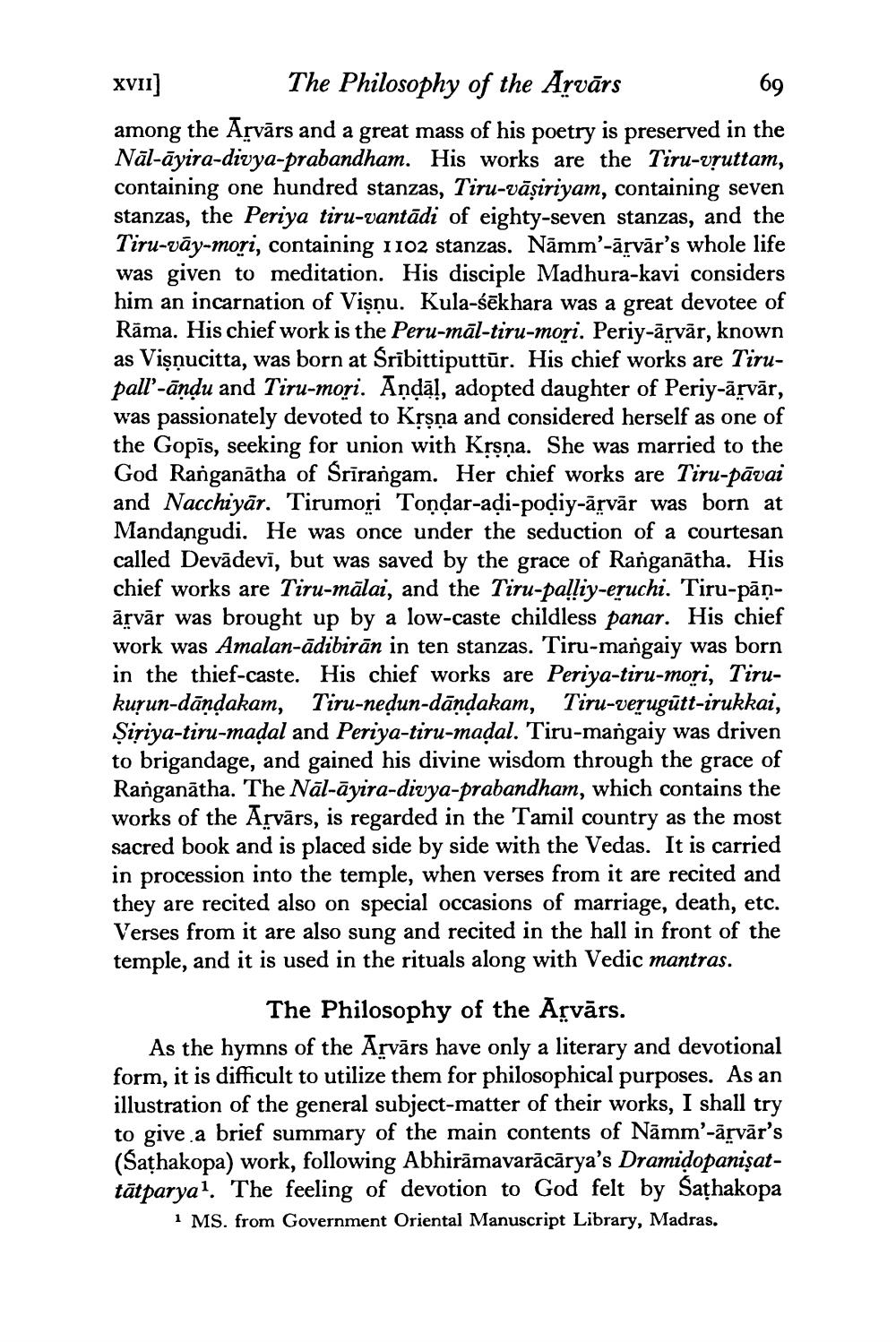________________
XVII
The Philosophy of the Arvārs among the Arvārs and a great mass of his poetry is preserved in the Nāl-āyira-divya-prabandham. His works are the Tiru-vsuttam, containing one hundred stanzas, Tiru-vāşiriyam, containing seven stanzas, the Periya tiru-vantādi of eighty-seven stanzas, and the Tiru-vāy-mori, containing 1102 stanzas. Nāmm'-ārvār's whole life was given to meditation. His disciple Madhura-kavi considers him an incarnation of Vişnu. Kula-śēkhara was a great devotee of Rāma. His chief work is the Peru-māl-tiru-mori. Periy-ārvār, known as Vişnucitta, was born at Śrībittiputtūr. His chief works are Tirupall’-āndu and Tiru-mori. Andāl, adopted daughter of Periy-ārvār, was passionately devoted to Krşņa and considered herself as one of the Gopis, seeking for union with Krsna. She was married to the God Ranganātha of Śrīrangam. Her chief works are Tiru-pāvai and Nacchiyār. Tirumori Tondar-aţi-podiy-ārvār was born at Mandangudi. He was once under the seduction of a courtesan called Devādevī, but was saved by the grace of Ranganātha. His chief works are Tiru-mālai, and the Tiru-palļiy-eruchi. Tiru-pān. ārvār was brought up by a low-caste childless panar. His chief work was Amalan-ādibirān in ten stanzas. Tiru-mangaiy was born in the thief-caste. His chief works are Periya-tiru-mori, Tirukurun-dāndakam, Tiru-nedun-dāndakam, Tiru-verugūtt-irukkai, Şiriya-tiru-madal and Periya-tiru-madal. Tiru-mangaiy was driven to brigandage, and gained his divine wisdom through the grace of Ranganātha. The Nāl-āyira-divya-prabandham, which contains the works of the Arvārs, is regarded in the Tamil country as the most sacred book and is placed side by side with the Vedas. It is carried in procession into the temple, when verses from it are recited and they are recited also on special occasions of marriage, death, etc. Verses from it are also sung and recited in the hall in front of the temple, and it is used in the rituals along with Vedic mantras.
The Philosophy of the Arvārs. As the hymns of the Arvārs have only a literary and devotional form, it is difficult to utilize them for philosophical purposes. As an illustration of the general subject-matter of their works, I shall try to give a brief summary of the main contents of Nămm'-ārvār's (Sathakopa) work, following Abhirāmavarācārya's Dramidopanişattātparyal. The feeling of devotion to God felt by Sathakopa
1 MS. from Government Oriental Manuscript Library, Madras.




